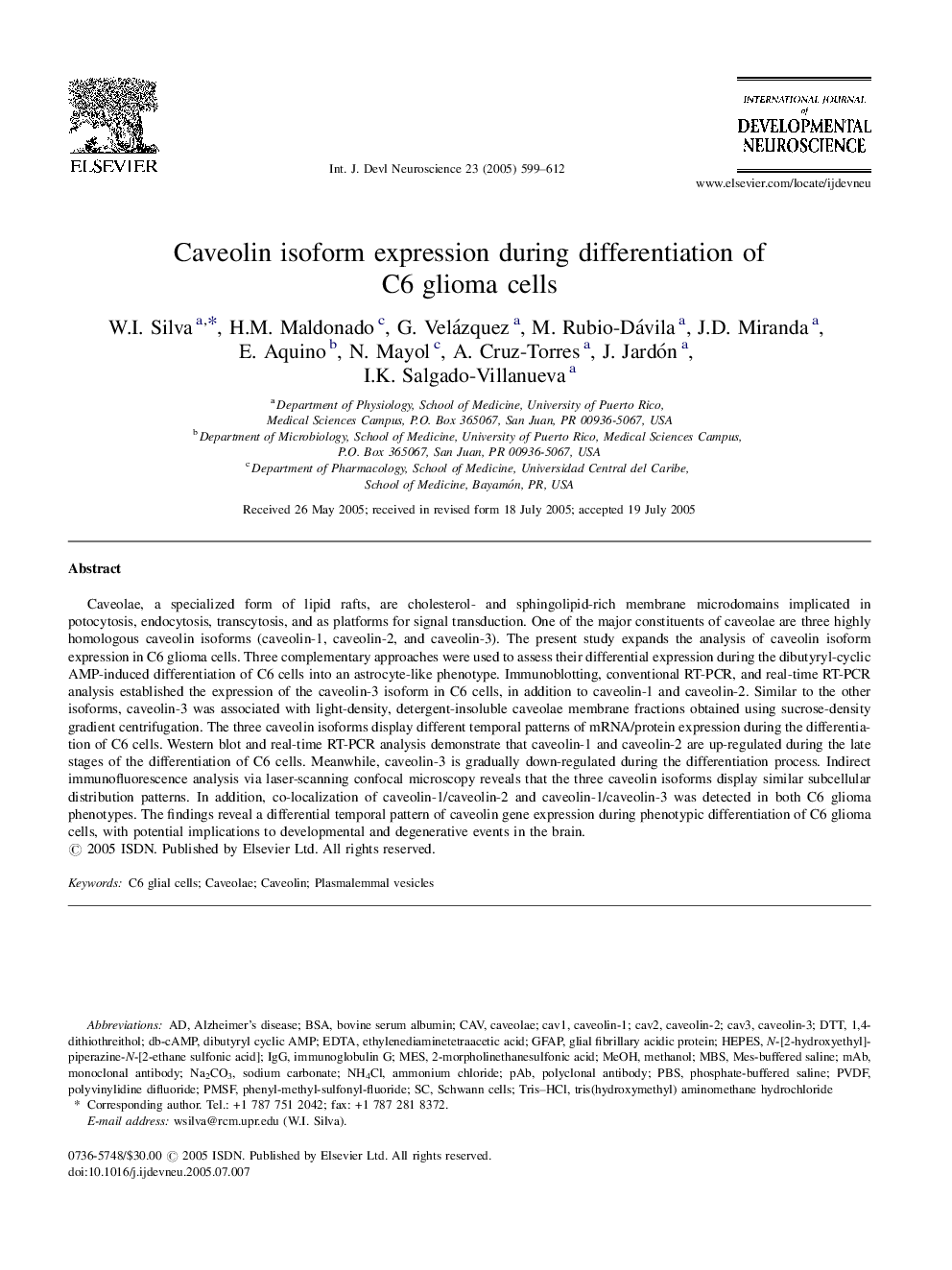| Article ID | Journal | Published Year | Pages | File Type |
|---|---|---|---|---|
| 9933556 | International Journal of Developmental Neuroscience | 2005 | 14 Pages |
Abstract
Caveolae, a specialized form of lipid rafts, are cholesterol- and sphingolipid-rich membrane microdomains implicated in potocytosis, endocytosis, transcytosis, and as platforms for signal transduction. One of the major constituents of caveolae are three highly homologous caveolin isoforms (caveolin-1, caveolin-2, and caveolin-3). The present study expands the analysis of caveolin isoform expression in C6 glioma cells. Three complementary approaches were used to assess their differential expression during the dibutyryl-cyclic AMP-induced differentiation of C6 cells into an astrocyte-like phenotype. Immunoblotting, conventional RT-PCR, and real-time RT-PCR analysis established the expression of the caveolin-3 isoform in C6 cells, in addition to caveolin-1 and caveolin-2. Similar to the other isoforms, caveolin-3 was associated with light-density, detergent-insoluble caveolae membrane fractions obtained using sucrose-density gradient centrifugation. The three caveolin isoforms display different temporal patterns of mRNA/protein expression during the differentiation of C6 cells. Western blot and real-time RT-PCR analysis demonstrate that caveolin-1 and caveolin-2 are up-regulated during the late stages of the differentiation of C6 cells. Meanwhile, caveolin-3 is gradually down-regulated during the differentiation process. Indirect immunofluorescence analysis via laser-scanning confocal microscopy reveals that the three caveolin isoforms display similar subcellular distribution patterns. In addition, co-localization of caveolin-1/caveolin-2 and caveolin-1/caveolin-3 was detected in both C6 glioma phenotypes. The findings reveal a differential temporal pattern of caveolin gene expression during phenotypic differentiation of C6 glioma cells, with potential implications to developmental and degenerative events in the brain.
Keywords
DTTCAV1NH4ClCAV3MBSdb-cAMPPABNa2CO3PMSFCaV2GFAPdibutyryl cyclic AMPC6 glial cellsPBSmAbIgGHEPESPVDFCAVBSAbovine serum albuminMonoclonal antibodyPolyclonal antibodyEDTAEthylenediaminetetraacetic acidimmunoglobulin GAlzheimer's diseaseTris–HClCaveolaepolyvinylidine difluorideSchwann cellsphenyl-methyl-sulfonyl-fluorideMethanolPhosphate-buffered salineMeSMeOHGlial fibrillary acidic proteincaveolin-1Caveolin-2Caveolin-3Sodium carbonateAmmonium chlorideCaveolin
Related Topics
Life Sciences
Biochemistry, Genetics and Molecular Biology
Developmental Biology
Authors
W.I. Silva, H.M. Maldonado, G. Velázquez, M. Rubio-Dávila, J.D. Miranda, E. Aquino, N. Mayol, A. Cruz-Torres, J. Jardón, I.K. Salgado-Villanueva,
